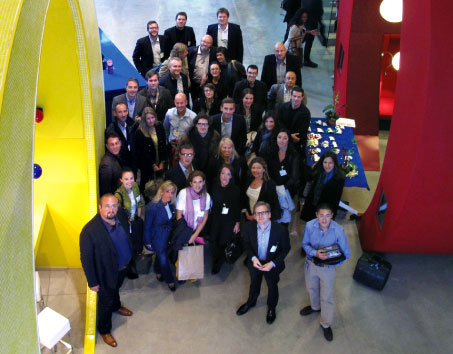
ACI EUROPE held its 1st Digital Communicators Forum meeting on 19 & 20 September, in partnership with GOOGLE Europe and daa (Dublin Airport Authority).
For all of the negative impact of that fateful week of airspace shutdown due to volcanic ash in April 2010, it was a moment that many in the air transport sector began to understand the usefulness of social media. Between that and the extreme weather which hit Europe the following winter, many airports quickly took to Twitter and Facebook to provide more information to their passengers.
We at ACI EUROPE have tracked this trend in two reports on social media and digital communications, which we issued in 2011 and 2012. Following the enormous interest we received in the second report, an event seemed to be the next logical step. So, at the beginning of 2013, we initiated the first ever social media and digital communications workshop for European airports. This was a free event held at our offices in Brussels, in mid-February, at which around 34 people from 22 airports were present. That event included presentations on social media from Brussels, Dublin and Gatwick airports, as well as a presentation on e-commerce/m-commerce by Copenhagen Airport and one on wearable technology by SITALab. The afternoon session saw social media consultancy Simpliflying animate the room with their inspiration and wisdom.
Following the success of that event, ACI EUROPE decided to create a formal group for airports interested in exchange and tracking of developments in the various facets of digital communications: the Digital Communications Forum.
Why a forum? Because many of these social networks are best used creatively and the ultimate way to inspire everyone as to the possibilities is to meet and exchange ideas. Moreover, given the speed with which digital communication is evolving, airports need to stay ahead of the curve on emerging tech and other trends and discussing, debating and learning from each other is part of that.
Consider all the progress that we have seen in the past 10 months. In February, Google announced its pay-to-trial contest for its wearable tech device, Google Glass. In September, we saw Samsung respond by bringing its wearable tech to the market in the form of its Galaxy smartwatch. These devices work in harmony with a mobile phone, but they will have implications on how a passenger consumes (and creates) information during the airport experience.
We’ve seen how aviation accidents are first reported by any one connected individual with a smartphone nearby (the Asiana crash in San Francisco was reported online less than a minute after it happened by a Google employee waiting for a different flight. 18 minutes later, a passenger tweeted a photo from the crash site). There was also the guy who was so unhappy with British Airways in September that he paid Twitter $1,000 to have his negative trend about BA at the top of their Twitter feed. The result was a story that travelled the world.
Furthermore, social network metrics have become hugely important – evidence not just of how your brand performs against its peers, but also potentially the level of information you have or could have about your passengers. Every quarter, we hear of a new study with the latest statistics on social networks or devices preferred by certain age groups and how they interact with them and each other.
Digital Communications Forum
These were some of the topics discussed on 19 & 20 September, when ACI EUROPE held its 1st Digital Communicators Forum meeting, in partnership with Google Europe and daa (Dublin Airport Authority).
As part of its mandate, the ACI EUROPE Digital Communications Forum seeks to bring together more digital communicators (from within the airport industry, to exchange ideas and best practice, as well as be inspired by guests from outside the industry). The scope of topics to be covered will range from social media, smartphone apps, webtools, emerging tech as well as exploring new trends in this ever-evolving discipline. The Forum will also provide input into the next edition of the ACI EUROPE Digital Report. Paul O’Kane, Public Affairs Director at daa and a very keen advocate of social media, was appointed Chair of the new Forum, with Gunnar Sigurdsson of Isavia taking on the role of Vice-Chair.
The meeting in Dublin provided a welcome mix of airport presentations, industry social media metrics from guest speaker Socialbakers and a series of airport industry-specific presentations by Google’s in-house team. There was also an interactive presentation by Robert Brandl, Founder of Tooltester.net, who demonstrated a series of easy-to-use low cost web tools which can be used for building campaign websites, gaining customer feedback and more.
The best is yet to come. The full implications of social networks such as Foursquare (the location based social network), Pinterest (a sort of travel inspiration pinboard website), Instagram (the photo & video filtering, magazine-like social network) have yet to be explored, not to mention the future of the smartphone app and the looming advent of Hotspot 2.0 aka, the future of WiFi.
We believe that the influence and power of the connected traveller is going to be hugely important for airport brands and ultimately, the bottom line, over the coming years.
Details of the next meeting of the ACI EUROPE Digital Communications Forum will be announced soon. If your airport is interested in participating, please contact Robert.OMeara@aci-europe.org







